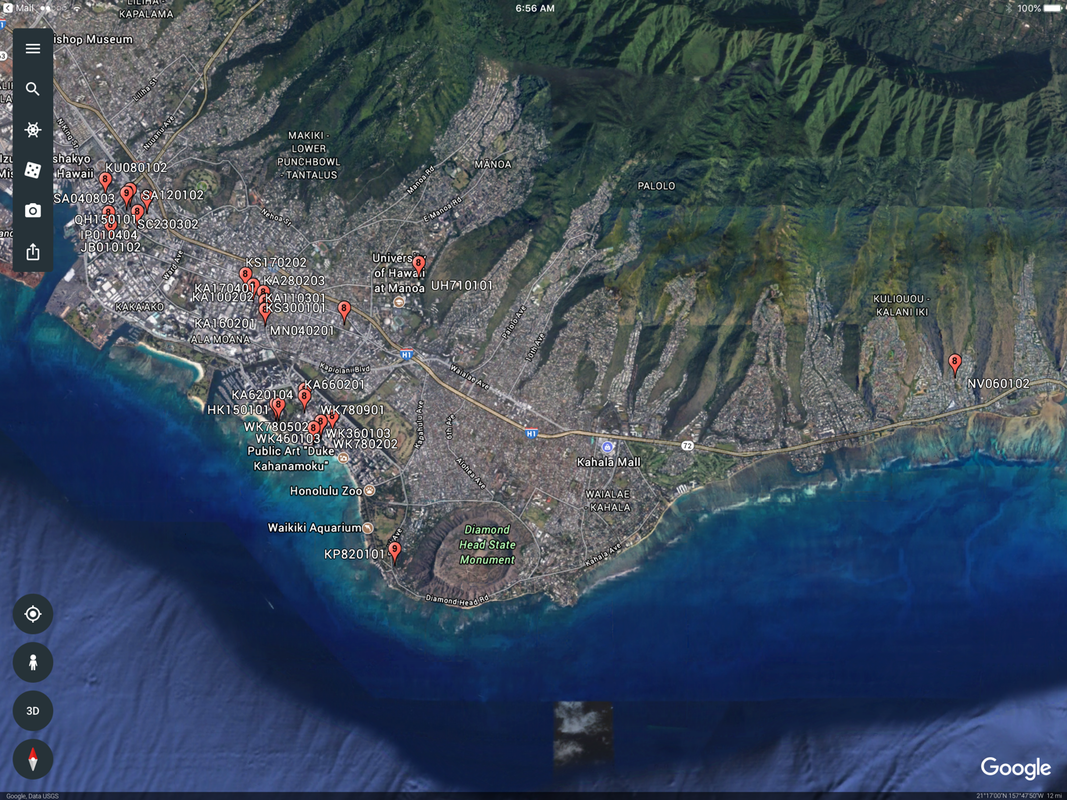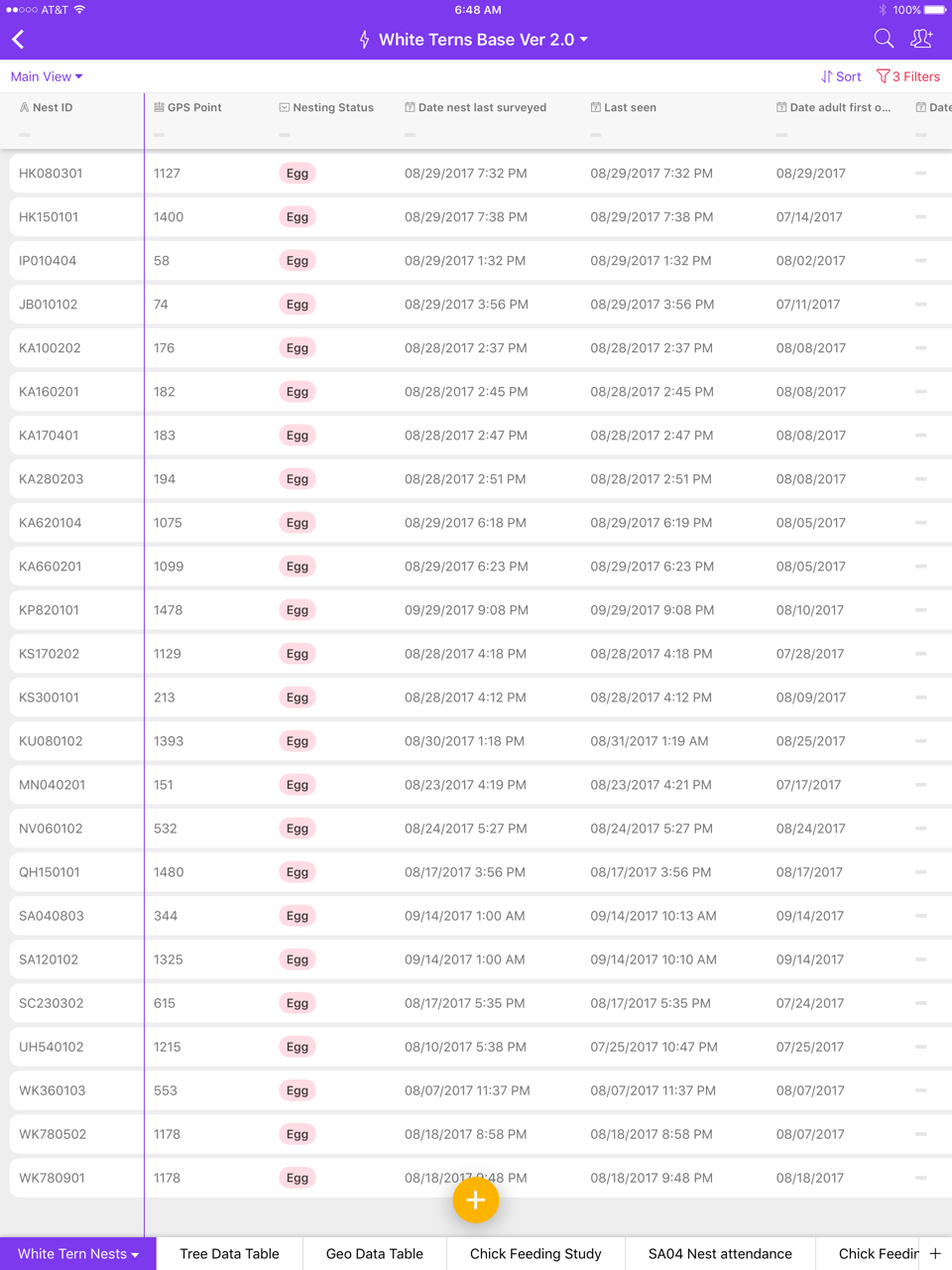|
When it comes to conforming to a well-defined breeding cycle, White Terns are notoriously lax. They can be found laying eggs and raising chicks any month of the year. However, last year's white tern breeding season on Oahu was the first time two peak periods of egg laying were observed, one in the spring and another in the fall. Since then, we have been wondering if what we saw was a fluke or possibly the new norm. This year we saw the expected spike in the number of eggs laid in the spring and recent surveying documented 68 eggs laid in September and October, a repeat of the bump in breeding activity seen in the fall of 2016. It's still too soon to tell if the breeding season for white terns on Oahu now routinely includes two peaks of nesting activity, but what happened last year may be no fluke.
The map below shows the locations of the nesting spots where eggs were laid during the months of September and October. Eggs are still being incubated in most of the locations, meaning that in coming weeks there will be more and more newly hatched chicks to admire and adore! With the support and assistance of a lot of people and state agencies, a group I'm involved with in Honolulu was able to flag our first trees yesterday with tape warning trimmers to the presence of nesting terns. In addition to cautioning about trimming the tree while Manu-o-Ku are actively nesting, the tape displays the phone number for the White Tern Hotline sponsored by the Hui Manu-o-Ku and the URL for our webpage with information on what to do if a chick falls out of the tree. The timing could not have been better since there has been a recent spike in breeding activity in multiple locations across the breeding range, including the grounds of the 'Iolani Palace where this tree stands. "Mahalo nui loa" to all those who made it possible for us to help make our city a safer place for Manu-o-Ku to raise their young! Special thanks to the good folks at the State of Hawaii Division of Forestry and Wildlife for their support of this project. Here's a chance to apply your skills as a citizen scientist! There are over 25 white tern eggs in trees scattered around Honolulu. At least there were the last time the trees were surveyed back in August. We need some volunteers to check the nesting spots again to see what became of these eggs. Here's all you need to do:
- Check the Google Earth map photo below for the locations of trees with eggs. Pick the tree(s) you want to check and note the Nest ID (ex. KS300101). You can also view this map on the Active Egg Map on this website. - Go to the online data base on our webpage at www.whiteterns.org. Click the Database tab. Then click the little magnifying glass icon in the upper right corner of the database window and enter the Nest ID. - Look at the photos in the database for this nesting event and note the location of the nesting spot in the tree. - Check the nesting spot in the tree and note what you see. - Report what you saw. You may see that the adult is still in the same spot in the incubating position. If so it's likely the egg is infertile, or the one we documented earlier failed and the pair has relaid already. Or you may see a chick at or near the nesting spot. You may also see an adult (NBA) at or near the nesting spot and no chick. Or the nesting spot may be vacant. There are a number of ways you can report your observations. You can click on the Citizen Science tab on our webpage and fill in the form. Since you have a Nest ID you can skip the fields asking for tree location and species information. The most important fields for this exercise are the date of observation, Nesting Event Status and observer name and contact info. Any additional details you can provide will be appreciated. Or, if you prefer, you can just email your observation to us using the Contact link on our webpage. Just be sure to include the Nesting ID, Nesting Event Status (Egg, Chick, Vacant, etc) and observation date in your email. You can contact me directly at [email protected] if you have any questions. A big "Mahalo!" in advance for any help you can provide us in checking up on these eggs! |
Archives
February 2024
Categories |


